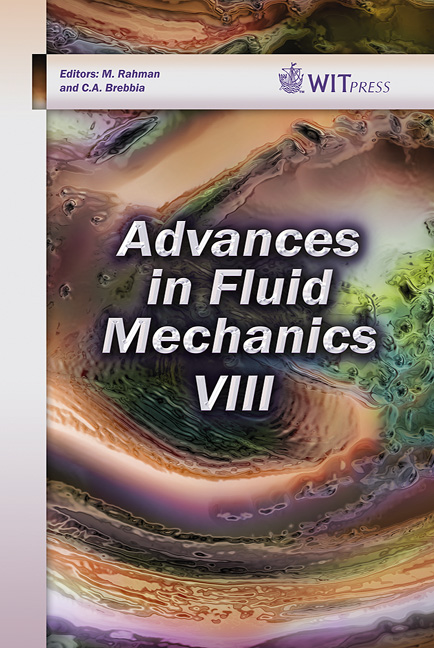Analysis Of Tunnel Compression Wave Generation And Distortion By The Lattice Boltzmann Method
Price
Free (open access)
Transaction
Volume
69
Pages
12
Page Range
169 - 180
Published
2010
Size
2,956 kb
Paper DOI
10.2495/AFM100151
Copyright
WIT Press
Author(s)
K. Akamatsu & M. Tsutahara
Abstract
The finite difference lattice Boltzmann method was applied to investigate the generation of the compression wave produced when a high-speed train enters a tunnel and the distortion of the wave front as it travels in the tunnel. The discrete Boltzmann equation for the 3D39Q thermal BGK model is solved in threedimensional space using a second-order Runge-Kutta scheme in time and a third order upwind finite difference scheme in space. The arbitrary Lagrangian- Eulerian formulation is applied to model the interaction of the moving train nose and the tunnel portal. Numerical calculations are carried out for axisymmetric trains with various nose profiles entering a long circular cylindrical tunnel with straight and stepwise flared portals. The generation of the compression wave can be described in terms of flow parameters along the train nose and the interaction with the tunnel portal. The train speed and the train to tunnel area dependence of the predicted wave strength are found to be in good agreement with an analytic linear prediction. The distortion of the compression wave front that travels within an acoustically smooth tunnel is consistent with the time-domain computation of the one-dimensional Burgers equation. The non-linear steepening is confirmed to be dependent on the initial steepness of the wave front, which is determined by the interaction of the train nose and the tunnel portal. The tunnel entrance with flared portals is shown not only to decrease the initial steepness of the compression wave front but also to counteract the effect of non-linear steepening. Keywords: lattice Boltzmann method, high speed train, compression wave, micro-pressure wave, nonlinear steepening, aerodynamic noise.
Keywords
lattice Boltzmann method, high speed train, compression wave, micro-pressure wave, nonlinear steepening, aerodynamic noise





